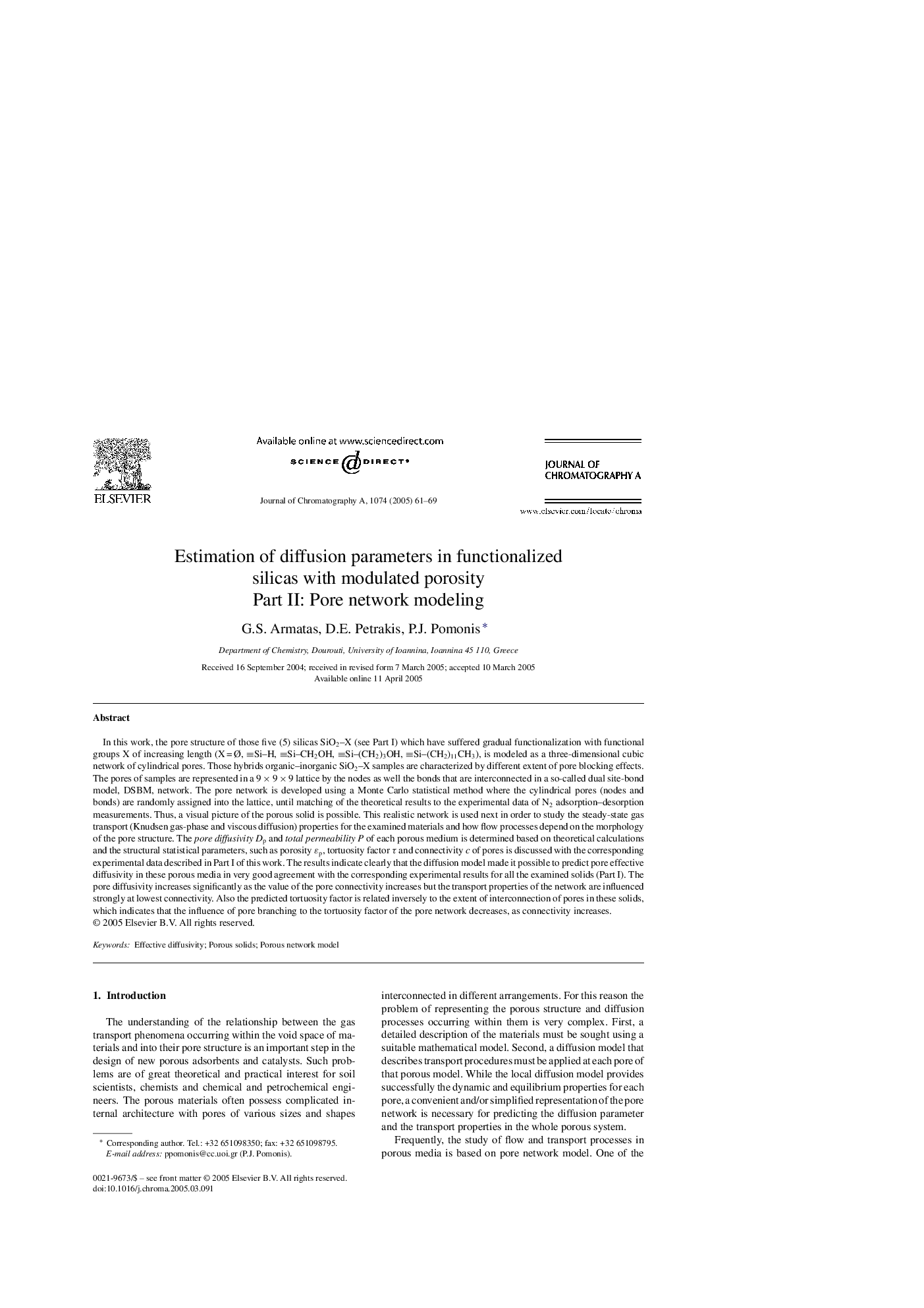| Article ID | Journal | Published Year | Pages | File Type |
|---|---|---|---|---|
| 9749091 | Journal of Chromatography A | 2005 | 9 Pages |
Abstract
In this work, the pore structure of those five (5) silicas SiO2-X (see Part I) which have suffered gradual functionalization with functional groups X of increasing length (XÂ =Â Ã, â¡Si-H, â¡Si-CH2OH, â¡Si-(CH2)3OH, â¡Si-(CH2)11CH3), is modeled as a three-dimensional cubic network of cylindrical pores. Those hybrids organic-inorganic SiO2-X samples are characterized by different extent of pore blocking effects. The pores of samples are represented in a 9Â ÃÂ 9Â ÃÂ 9 lattice by the nodes as well the bonds that are interconnected in a so-called dual site-bond model, DSBM, network. The pore network is developed using a Monte Carlo statistical method where the cylindrical pores (nodes and bonds) are randomly assigned into the lattice, until matching of the theoretical results to the experimental data of N2 adsorption-desorption measurements. Thus, a visual picture of the porous solid is possible. This realistic network is used next in order to study the steady-state gas transport (Knudsen gas-phase and viscous diffusion) properties for the examined materials and how flow processes depend on the morphology of the pore structure. The pore diffusivityDp and total permeabilityP of each porous medium is determined based on theoretical calculations and the structural statistical parameters, such as porosity Ép, tortuosity factor Ï and connectivity c of pores is discussed with the corresponding experimental data described in Part I of this work. The results indicate clearly that the diffusion model made it possible to predict pore effective diffusivity in these porous media in very good agreement with the corresponding experimental results for all the examined solids (Part I). The pore diffusivity increases significantly as the value of the pore connectivity increases but the transport properties of the network are influenced strongly at lowest connectivity. Also the predicted tortuosity factor is related inversely to the extent of interconnection of pores in these solids, which indicates that the influence of pore branching to the tortuosity factor of the pore network decreases, as connectivity increases.
Keywords
Related Topics
Physical Sciences and Engineering
Chemistry
Analytical Chemistry
Authors
G.S. Armatas, D.E. Petrakis, P.J. Pomonis,
